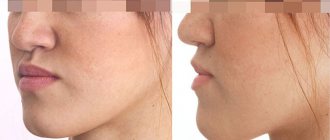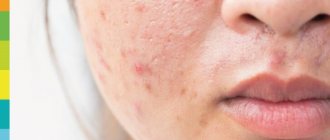Who, if not pharmacists and pharmacists, should know that ethanol is a typical representative of monohydric alcohols, capable of entering into various chemical reactions. It interacts with alkali metals, magnesium, aluminum, carboxylic, inorganic acids and many other substances, including medicinal ones. According to some data, up to 25% of visits to the emergency room are associated with various adverse reactions between alcohol and drugs [1]. And it is quite natural that such widespread unfavorable events have become fertile ground for various speculations. On the eve of a series of holidays, it’s time to find answers to the most controversial questions about interactions between drugs and alcohol, as well as dispel the myths associated with it.
Thesis No. 1: Alcohol is incompatible with any antibiotics
Status: Myth
Indeed, a number of antimicrobial agents block acetaldehydrogenase, delaying the enzymatic biotransformation of ethanol at the stage of extremely toxic acetaldehyde. Its accumulation in the body contributes to the development of intoxication, which is accompanied by severe sensations. In fact, these drugs work in the same way as the famous disulfiram, used to treat alcohol addiction, which simply causes poisoning of the body. Its typical symptoms are difficulty breathing, tachycardia, nausea and vomiting, low blood pressure, fever or chills.
However, only a few antimicrobial drugs act in this way, in particular: cefamandole, cefoperazone, chloramphenicol, griseofulvin, isoniazid, metronidazole, ornidazole, nitrofurantoin and sulfamethoxazole.
All other antimicrobials do not have strict restrictions when combined with ethanol, but this does not mean that their combination helps to effectively fight infection.
Literature:
- Nishi Katsuzou. Detoxification and renewal of the body [Text]: diets, vibrations, meditation / Katsuzo Nishi. – St. Petersburg: Vector, 2013. – 155, [1] p. : ill.; 21 cm.
- Damir, Elena Alimovna. Infusion-transfusion therapy in a surgical clinic [Text]: [Textbook. allowance] / E. A. Damir, Yu. N. Shanin, A. L. Kostyuchenko; Ministry of Health of the USSR. Center. Institute for advanced training of doctors. – Moscow: [b. i.], 1972. – 63 p.; 20 cm.
- Zaikovsky, Vitaly Viktorovich. Detoxification in acute ethanol poisoning, complicated by alcohol withdrawal syndrome or delirium delirium: dissertation ... candidate of medical sciences: 03.14.04 / Zaikovsky Vitaly Viktorovich; [Place of defense: Emergency Medical Research Institute]. – Moscow, 2011. – 152 p. : 6 ill.
- Issues of addiction. 2022. 2022, No. 8 (168). – 2022. – 106, [1] p. : table
Thesis No. 2: Alcohol and non-steroidal anti-inflammatory drugs are incompatible
Status: True
NSAIDs are one of the most popular painkillers. In the United States alone, this group accounts for 70 million prescriptions and 30 billion over-the-counter sales per year [2]. They are also used to relieve headaches due to alcohol intoxication. At the same time, most NSAIDs contribute to the development of gastropathy and increase the risk of gastrointestinal bleeding. Alcohol increases the severity of GI side effects of NSAIDs, increasing the risk of bleeding, which has been proven in clinical studies [3].
In addition, when acetylsalicylic acid, ibuprofen and indomethacin are taken simultaneously with ethanol, the duration of bleeding increases - an indicator that reflects the elasticity of blood vessels and their ability to contract during injury [3]. This feature further increases the risk of bleeding. Therefore, when dispensing oral and parenteral NSAIDs during the New Year holidays, it would be a good idea to remind visitors about possible drug interactions with alcohol.
Content:
- What are the objectives of infusion-drip therapy?
- Is it possible to drink alcohol after a drip 2.1. What are the consequences of drinking alcohol after a drip?
- What steps should you take after IV drips?
- Is there a way to drink alcohol in moderation after an IV?
Treatment of chronic alcoholism brings a positive effect with an integrated approach .
One of the stages of the medical program is infusion-drop therapy. This method of intoxication of the body in modern narcology is used to quickly relieve binge drinking, alcohol poisoning, and to cleanse the body of ethanol breakdown products. Detoxification measures help to quickly and safely remove toxins and poisons from the blood and normalize a person’s condition before further medical procedures. Some patients are interested in whether it is possible to drink alcohol after IV drips. And although the answer to this question is obvious, we will try to substantiate the need to give up alcohol during detoxification measures.
Thesis #3: Alcohol should be avoided during treatment with antidepressants.
Status: True
It is not recommended to combine alcohol with all antidepressants, although the mechanism of drug-ethanol-drug interaction and the severity of the consequences vary. Thus, in combination with tricyclic blood pressure medications (amitriptyline, maprotiline), ethanol can contribute to hypersedation. It disrupts the metabolism of drugs of this group in the liver, which leads to an increase in their concentration in the blood. If, in addition, the alcohol consumer has a history of alcoholic liver disease, the risks increase even more, since in this case the breakdown of antidepressants slows down and, accordingly, their level in the bloodstream increases. Increasing the dose of tricyclic antidepressants in the blood, in turn, causes cardiac arrhythmias, convulsions, hallucinations and other severe consequences, including coma [3].
The combination of selective serotonin reuptake inhibitors and alcohol is much less dangerous. Drugs in this group generally have a higher safety profile than tricyclic antidepressants and are less likely to enter into drug interactions. However, despite the absence of documented reactions between them and ethanol, their use in combination is still not recommended. This is largely due to the fact that combining SSRIs with alcohol can exacerbate the disease [4]. In addition, it has been proven that when venlafaxine is combined with ethanol, memory and cognitive abilities may decrease [4].
What steps should you take after IV drips?
If the addict has already sought medical help for a detoxification course, this indicates an awareness of the problems with excessive alcohol consumption. It is very important not to stop after several droppers, when the acute manifestations are stopped. After all, this is just temporary relief, and complete victory over the “green serpent” is still far away.
Consultations with a narcologist, psychologist or psychotherapist will help you make the right decision. Only a specialist can determine at what stage of addiction the patient is and develop an optimal plan of medical support. The list of necessary measures for the full treatment of alcoholism, in addition to detoxification procedures, includes:
- drug therapy for complications and concomitant diseases;
- psychotherapeutic support, providing various methods of influence: individual and group sessions, self-analysis, hypnosis, creative and behavioral approaches;
- coding using medication, hardware or combined methods;
- physiotherapeutic sessions, massage, acupuncture;
- rehabilitation and social adaptation.
The best option would be if a person spends the entire treatment period in the clinic under the close attention of medical personnel. In this case, the patient will not be able to put his thoughts into action about whether it is possible to drink alcohol after IV drips. If the patient spends the entire period in a hospital, and recovery takes place in a specialized center, then he simply will not have the opportunity to drink.
The addict is completely protected from external temptations; he will not be able to meet his former drinking buddies or buy alcohol. The combination of the healing process, feasible work with rest, sports and cultural events accelerates healing and a return to a sober life.
Thesis No. 4: If you have a headache from drinking alcohol, it is better to take paracetamol
Status: Myth
Paracetamol is metabolized by the CYP2E enzyme to form the hepatotoxic metabolite N-acetyl-p-benzoquinone imine. Normally, it is quickly inactivated by glutathione. When consuming alcoholic beverages, especially chronically, the activity of CYP2E1 increases, which leads to increased production of a toxic metabolite. In addition, during prolonged drinking, glutathione reserves are depleted, which is associated with the accumulation of a toxic metabolite in the blood and an increased risk of developing liver failure [5].
The likelihood of drug interactions between ethanol and paracetamol also increases when taking more than 4 grams of the drug per day. The American regulator FDA recommends that those who take more than 3 alcoholic units per day (remember, an alcoholic unit is 30 ml of 40% alcohol, 100 ml of wine or 250 ml of beer) consult a doctor before taking either paracetamol or over-the-counter analgesics [ 5]. During the New Year holidays, it is important for residents of the capital to draw the attention of consumers to the increased likelihood of hepatotoxic reactions when combining paracetamol and combination drugs containing it with alcohol.
Psychotherapeutic coding method
It is important to decide how many days you should not drink alcohol before coding if a psychotherapeutic treatment method is used. In this case, the person is required to give up alcohol for a period of one to two weeks.
During this time, a person needs to prepare for the upcoming procedure. And not only physically, but also mentally. If the patient manages to independently survive this period without alcohol, this serves as additional evidence that he has firmly decided to quit drinking. In this case, the use of the psychotherapeutic method will be most effective.
An important condition for using this method is a conscious decision to get rid of addiction. This means that the person has an important incentive to stop drinking, such as family attachment. It is important not to lose this incentive.
Thesis No. 7: Alcohol should not be combined with certain antidiabetic drugs.
Status: True
In case of diabetes mellitus, drinking alcoholic beverages is generally extremely undesirable - this threatens a sharp drop in blood sugar levels and the development of hypoglycemia, which is associated with a violation of the release of carbohydrates stored in liver cells against the background of alcohol intoxication. The risks of hypoglycemia in diabetic patients who drink alcohol are further increased due to possible drug interactions between ethanol and some sulfonylureas, in particular glipizide [3].
Combining alcoholic beverages with the first-line drug for the treatment of type 2 diabetes mellitus, metformin, can lead to increased levels of lactic acid in the blood and the development of lactic acidosis. The likelihood of its occurrence increases with a low-calorie diet, poor nutrition and liver failure. Therefore, metformin is incompatible with alcohol in both alcoholic beverages and alcohol-containing medications [3].
Insulin also interacts with ethanol. Alcohol can enhance or weaken the hypoglycemic effect of the drug, which can lead to the development of hypo- or hyperglycemia and, accordingly, worsening disease control [7].
Is there a way to drink alcohol in moderation after an IV?
Even when a person fully understands the gravity of his situation, he still often tries to find an excuse and a reason for drinking after infusion therapy. The main arguments sound like this:
- I'm not like that degraded type, I know how to control myself.
- Am I an alcoholic, because I’m not lying under the fence.
- I will be able to drink little by little so as not to go into binge drinking.
- I will only drink alcohol on weekends and holidays.
But these phrases in the mouth of an alcoholic are just words designed to justify his desire to return to drinking strong drinks. And even a small portion of an alcohol-containing product can again plunge a person into the whirlpool of continuous drunkenness. Because no matter how passionately the patient may want to drink moderately and civilly, he is unlikely to succeed.
Therefore, you should refrain from such an ill-considered step as drinking alcohol after an IV. If the craving for alcohol is irresistible, and you feel that you might relapse, then be sure to contact a specialist in a drug treatment clinic. Doctors will suggest the best solution to your problem and help you cope with your psychological and physical cravings for intoxicating drinks.
Thesis No. 8: If you have a hangover, you can take regular “cold powders”
Status: Myth
Anti-cold combination drugs contain several components, and at least two of them can interact with ethanol. Firstly, most drugs in this group contain paracetamol, sometimes in a dose of 1000 g. When it is combined with alcohol, the risk of hepatotoxic reactions increases. Secondly, many anti-cold combination drugs contain 1st generation antihistamine components. Alcohol can potentiate their depressant effect on the central nervous system, promoting the development of hypersedation and drowsiness [3]. Therefore, drugs from this group should not be recommended as remedies to relieve hangover symptoms.
Sources
- Alcohol-medication interactions. Alberta Health Services. – [Electronic resource] – URL: https://www.albertahealthservices.ca/assets/healthinfo/AddictionsSubstanceAbuse/hi-asa-beyond-abcs-a... (Access date 12/09/2019).
- Alcohol-medication interactions. Alberta Health Services. – [Electronic resource] – URL: https://www.albertahealthservices.ca/assets/healthinfo/AddictionsSubstanceAbuse/hi-asa-beyond-abcs-a... (Access date 12/09/2019).
- Green GA Understanding NSAIDs: from aspirin to COX-2 //Clinical cornerstone. 2001; 3 (5): 50–59.
- Weathermon R., Crabb DW Alcohol and medication interactions //Alcohol research. 1999; 23 (1): 40.
- Adams WL Interactions between alcohol and other drugs //International journal of the addictions. 1995; 30 (13–14): 1903–1923.
- Noureldin M. et al. Drug-alcohol interactions: a review of three therapeutic classes //US Pharm. 2010; 35 (11): 29–40.
- Moore AA, Whiteman EJ, Ward KT Risks of combined alcohol/medication use in older adults //The American journal of geriatric pharmacotherapy. 2007; 5 (1): 64–74.
- According to GRLS data as of December 12, 2019.
What to do when choosing in favor of combined techniques?
When using a combined method, different approaches are mixed. Of course, choosing the optimal period of abstinence from this becomes more difficult. The doctor must make an individual calculation, taking into account not only the patient’s body, his psyche and the characteristics of the course of the disease. The features of the methods used will also be taken into account. As a result, the doctor will be able to name the period, which is usually at least 20 days.
Combination treatment is very effective, which is why people willingly take advantage of such opportunities. When carried out by specialists from a good center, the method will give a 100% lifelong result. However, you need to be prepared for long-term abstinence before starting treatment. It is also sometimes possible to start treatment with those methods that require minimal time. In a word, with this approach, everything will be decided only by the doctor , based on his experience and knowledge.
Pregnancy, lactation
From the instructions for use it is known that calcium gluconate tablets can be taken during an interesting situation from the second trimester. Before therapy, a pregnant woman must undergo tests to determine the level of calcium in the blood.
A few weeks before giving birth, tablet therapy is stopped, since increased intake of calcium gluconate can lead to problems.
The use of the drug during lactation is possible according to indications. The daily dosage is also no more than 6 tablets.
“Hot injection” for alcoholism: features of the procedure, duration of effect
Injection of a disulfiram-containing drug can be performed both at home and in a hospital setting. The manipulation itself takes a few minutes, but before that the doctor explains to the patient in detail how the medicine “works” and lists possible complications due to violating the strict ban on drinking. After this, the doctor asks you to sign a written consent for the injection.
Disulfiram is included in various medications:
- Esperal;
- Aquilong;
- Algominal;
- SIT et al.
The duration of the coding depends on the dose administered and can be up to 3 years. Alcoclinic additionally offers a double or triple block service, when several injections are made in different areas of the body.
Important!
Soon after the medical procedure, the person can return to their normal lifestyle, including driving.
Provocation
A few days later, a provocation is possible, in which the patient is given a cotton swab soaked in ethanol to sniff. The sensations that arise after this clearly demonstrate the encoding effect. Due to the high likelihood of an acute reaction to alcohol after a “hot shot” for alcoholism, this procedure is performed on an outpatient basis in the clinic (by appointment at a time convenient for the client).
What vitamins are added to anti-hangover remedies?
Many manufacturers of anti-hangover products enrich them with vitamins from group B and C. The use of such drugs helps relieve the toxic effect, pain, and keeps the body in good shape.
B6 and B1 are included in:
- Doctor Pokhmelin;
- Security Feel Better;
- Vega +.
In addition to the substances mentioned, some foreign and domestic anti-hangover products are supplemented with ascorbic acid. Among these are Drink-Off, Stand Up, Guten Morgen.
The composition of the popular Russian drug Antipohmelin is represented by several acids, vitamin C and glucose. The Western analogue of this product, produced under the name Ru-21, is in many ways similar to it, but is additionally enriched with high doses of vitamin B (5 times the daily requirement).
Side effects
According to the instructions for use, it is known that calcium gluconate is usually well tolerated by patients, but in rare cases the following negative effects may occur:
These signs are not dangerous and go away on their own when the calcium dosage is reduced.
If the solution is used quickly, the following reactions may occur: nausea, increased sweating, vomiting, arterial hypotension, collapse. In rare situations, allergic and anaphylactic reactions have been observed. When calcium gluconate is used intramuscularly, local irritation and tissue death are likely.





